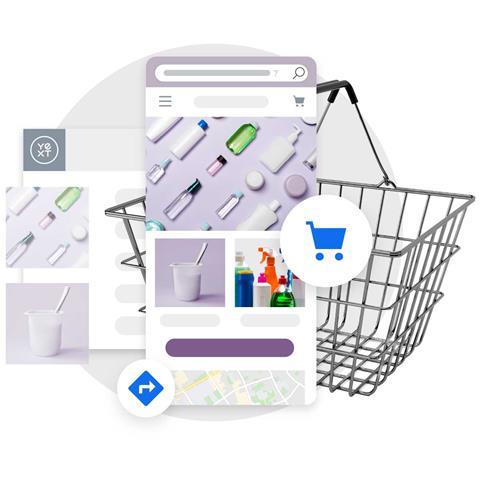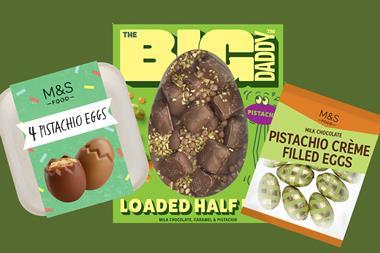Heard about the rise of direct-to-consumer (DTC) retail brands over the past few years? It feels like you’d have to be living under a rock not to. The trend has certainly made headlines, spawning articles that do everything from define the DTC sales model to explore how digitally-native upstarts are approaching brick-and-mortar retail.
But it’s not just retailers who are thinking about DTC channels — far from it. We’re currently witnessing rapid growth in consumer packaged goods (CPG) brands taking the leap to a DTC business model.

A part of that growth has to do with unique circumstances brought about by the COVID-19 crisis. By necessity, customers spent March and April shifting from in-store shopping to pick-up, grocery delivery, and ecommerce.
“As you’re hearing from everybody else, ecommerce has become a high-growth channel at this point,” Pepsi CEO Ramon Laguarta confirmed last month during the company’s Q1 earnings call. The brand recently joined other household name CPG brands like Kraft-Heinz and Anheuser-Busch InBev in speaking about its commitment to DTC ecommerce.
But most companies view the move as more than a temporary adjustment meant to help them weather the pandemic. Instead, it’s a strategic, long-term commitment aimed at opening up new channels and capitalizing on growing enthusiasm for DTC brands across verticals — and COVID-19 merely accelerated an existing movement. As reported by AdExchanger, Anheuser-Busch InBev CEO Carlos Brito seemed to confirm as much: “Things that we’ve invested in already… for the past five years, like direct-to-consumer, like ecommerce, have proven to be good decisions,” he said.
But while shifting to incorporate a DTC model offers major opportunities, it also presents significant challenges, as you’d expect with any new business line. Here are a few of the biggest hurdles CPG brands must clear — and how they might seek to address them.

Providing great customer service
CPG marketers might be pros at audience targeting, but it’s easy to see why providing great customer service could pose a challenge to a brand not used to communicating and selling directly to consumers.
“For CPG brands using DTC for the first time, learning how to best manage the customer service relationship is mission-critical,” Brad Birnbaum writes for Forbes. “The DTC environment makes cross-channel customer communication even more important, giving CPG brands no choice but to improve their customer service literacy. Whether communicating via phone, email, [online] chat or social media, brands… must be able to nimbly answer any and all customer queries, regardless of channel.”
CPG brands should make sure they have a seamless, cross-channel customer service strategy in mind before making the DTC shift. That means being ready to react when customers have an issue, but it also means prioritising the ability to provide customers with the answers they seek proactively, everywhere they search. More on this under point 3.
Capturing search traffic through content creation
CPG brands may be used to brand building on their owned channels, but a DTC model requires a different kind of messaging. It’s critical to forge the right balance between broader brand evangelism and crafting targeted content that is specifically designed to capture share in organic search.
Some CPG brands going DTC acquire a DTC upstart company directly, such as Unilever buying Dollar Shave Club. But if that’s not your story, make sure you have the right team in place to create diverse content for your owned channels. DTC brands are pros at this, particularly when it comes to crafting content across their website and blog that is aimed at capturing organic search traffic (explore Casper’s content marketing strategy detailed here). CPG brands going into the DTC space need to be aware of this and ready to act.
Creating a navigable, customer-first website
If DTC forms any part of your business, your website needs to prioritise the “customer” part of that acronym — which means it needs to be seamlessly navigable and customer-first in order to create a quicker path to purchase. Your brand needs to deliver a great site search experience so that customers can find answers about your brand and your products easily.
Unfortunately, some major CPG brands are failing at answering basic brand questions on their website — likely because they haven’t previously thought about customers searching on-site as a business priority.
But it should be, and here’s why: brand websites are the digital “front door” for DTC companies and an estimated 68% of people would not return to a site that provided a poor search experience. What’s more, people who use site account for 2.6x more of a business’s online revenue than people who don’t.* If you’re not delivering a great search experience on your website, you’re not putting your best foot forward with customers. Period.
It’s clear that the move for CPG brands to incorporate a DTC component isn’t going away anytime soon: “In the CPG industry right now, any growth strategy that fails to include a DTC component will be unable to tap into the power of e-commerce, a major market driver,” Birnbaum concludes. “The real CPG winners will be those that invest not only in DTC, but in the customer service infrastructure required to satisfy even the finickiest of customers.”
Visit yext.co.uk to learn more, and deliver a better site search experience to your visitors
*Yext calculation based on data from Addsearch and Bloomreach





















